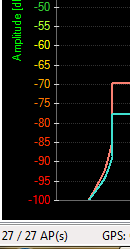- Joined
- Jun 14, 2004
As the thread title mentions.
I live in a highly congested wireless area. Any given time, I can pick up between 8 to 29 AP's. Depending were I am at in my humble abode, it goes up.. Which kind of sucks. Lucky I can use inSSIDer 2 to try and find an open channel. Sometimes, permitting, I can find an open channel, sometimes not.
How do you deal with highly congested areas and no open channels?
I live in a highly congested wireless area. Any given time, I can pick up between 8 to 29 AP's. Depending were I am at in my humble abode, it goes up.. Which kind of sucks. Lucky I can use inSSIDer 2 to try and find an open channel. Sometimes, permitting, I can find an open channel, sometimes not.
How do you deal with highly congested areas and no open channels?
Attachments
Last edited:



